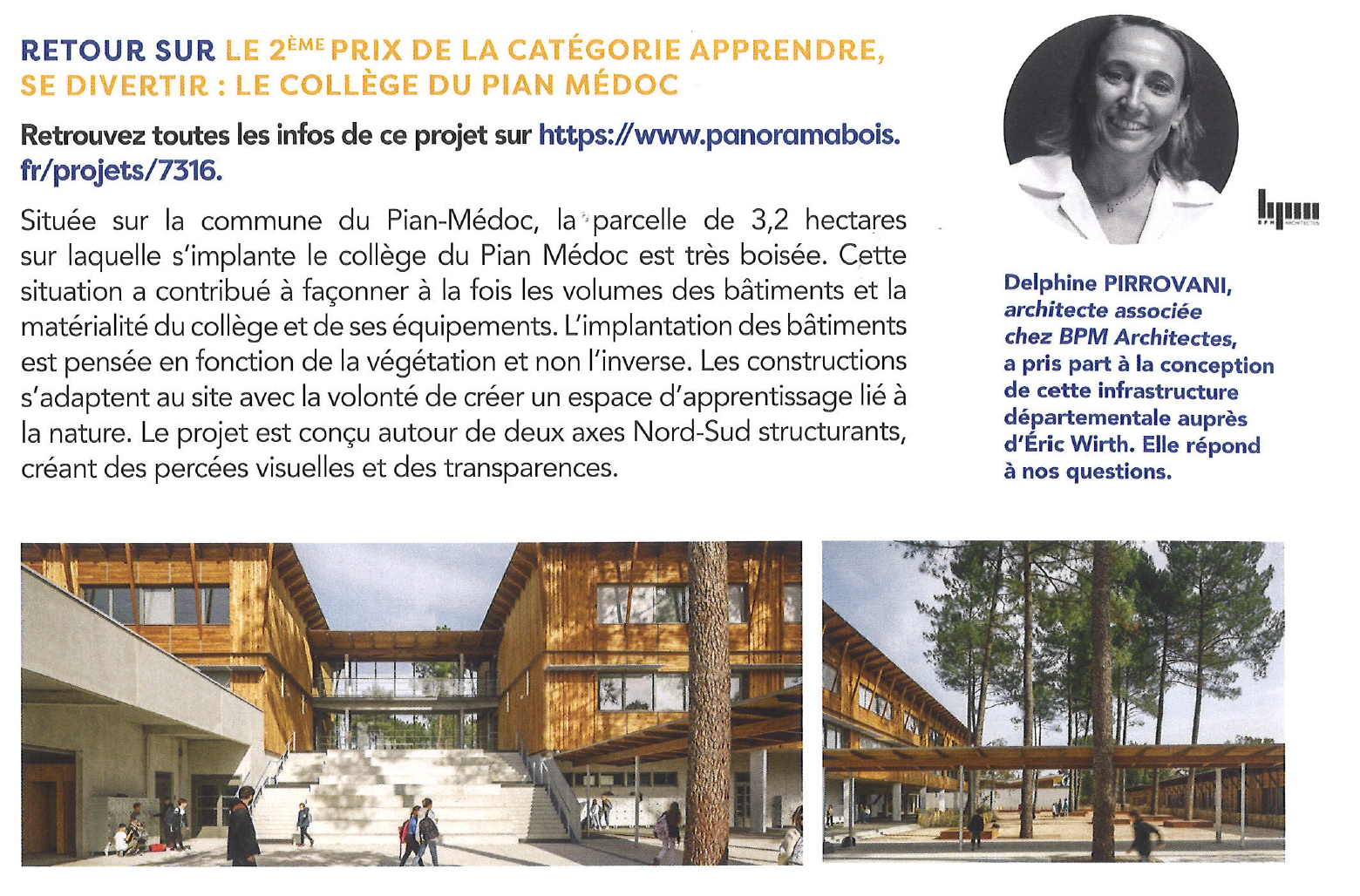Located in the municipality of Pian-Médoc, the 3.2-hectare plot on which the Pian Médoc college is located is heavily wooded. This situation has contributed to shaping both the volumes of the buildings and the materiality of the college and its equipment. The placement of the buildings is designed according to the vegetation and not the other way around. The constructions adapt to the site with the desire to create a learning space linked to nature. The project is designed around two structuring North-South axes, creating visual breakthroughs and transparencies.
Delphine PIRROVANI, associate architect at BPM Architects, took part in the conception of this departmental infrastructure alongside Eric Wirth. She answers questions of the Magazine questions.
Find all the information about this project on panoramabois.fr
TRANSLATION OF THE ARTICLE
FORETS DE GASCOGNE: Delphine, you are part of the team of architects who participated in the construction project of the Pian-Médoc college. Was the use of wood evident and was it a wish of the Department, in charge of infrastructure, or a proposal made during the competition?
DELPHINE PIRROVANI: Given its location in a forest and being part of a pine forest, the Gironde department wanted to make the Pian Médoc college a emblematic college of wood.
Using wood in construction was therefore both a programmatic imperative and a desire of the Department, however, we developed, during the competitions, the idea of reusing the wood from trees cut down during clearing. necessary for the construction of the 9000 m² building. 80% of the wood from the site was therefore reused in the construction.
A methodology was put in place during the design phase, with a landscape company, Lesbats, in charge of monitoring the wood. Trees were felled and then processed on site by a sawyer, before being shipped to the sawmill. Once dried, the elements for the facades returned to the site, and the beams were used in the facade cladding and exterior furniture.
We also, during the competitions, commissioned a surveyor to proceed with an accurate inventory of the trees on the site. We have always placed the project around the presence of these maritime pines, with a particular attention paid to their height and presence, creating a recreational area and shaded by a canopy of light and filtered by a plant atmosphere appreciated by all users, children and adults alike.
FDG: What is the share of wood projects like the BPM Architects agency conceives? Do you see an evolution in the perception of wood in the building industry?
DP: The use of biosourced material is increasing in our projects and has been at the heart of our concerns for several years. We have always had at heart to use wood from local species. In 2013, when BPM was already working with maritime pine, others in the region were already using oak from the Landes or Gabarret forest.
Now an agency based in Bordeaux, in the heart of the Bordeaux metropolitan area, it is with the Landes massif and the Gabarret forest that we are working for the use of maritime pine. It is with this same proximity that we must (prescribe) encourage the use of maritime pine on the building sites of the metropolis and avoid the importation of wood.
Maritime pine has a place in every construction, notably thanks to a sector that is developing, supported by research for new treatments and modernization of production chains to continue to progress and generalize its use in construction.
